Issue #1: JANE magazine, from feminist brilliance to manic pixie meltdown 👅💎💀

October 18, 2017
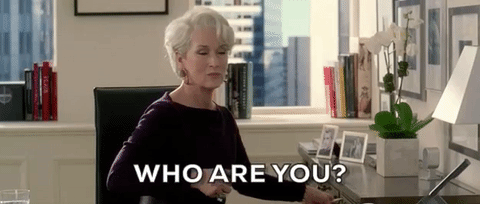
Hi! We’re Clipped, a biweekly newsletter about women’s magazines — from colonial Philadelphia to Cosmo.
Written by journalists and magazine hoarders Natalie Daher and Danielle Fox, Clipped will bring you profiles, interviews, gifs and hand-drawn timelines as we make a digital history of women’s glossies.
Starting with JANE.
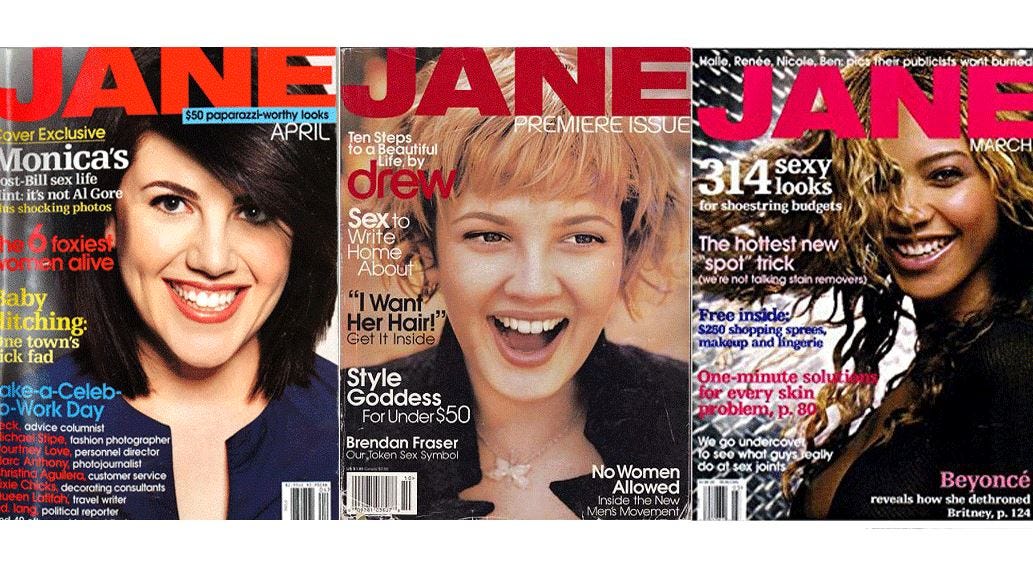
“I didn't want to create a magazine that would make women feel bad after reading it. I didn't want it to be a manual for all your flaws and all the things you need to fix." - Jane Pratt, editor-in-chief (1997)
who was JANE?
JANE was a lifestyle magazine for women ages 18-to-34 who grew up reading Sassy. It wasn’t supposed to be like other women’s magazines, and it both hit and missed that mark.
JANE frontloaded feminism before feminism was mainstream and prototyped the era’s manic pixie dream girls. It published in-your-face, honest features on natural breast shapes, Prozac and a Pakistani woman rebelling against her family’s cultural expectations — to name a few.
Like a very '90s shit-stirrer, JANE gave a weekly column to Pamela Anderson and ran a pithy interview with the highly controversial, 27-year-old Monica Lewinsky during Bill’s last year in office. Instead of diet plans or sex tips to please your man, JANE ran a stat on the average erect dick size, called out exceptionally poor empowertising and placed cover lines on acid attacks next to Courtney Love explaining why “fatter is sexier.”
Perhaps most strategically, JANE could care less if you did 17 internships; it cast musicians, drug addicts and “freaks with a point of view and talent” as its editorial staff. JANE’s statements weren’t novel among zines and feminist book clubs, but were bold moves for a glossy sold at your local Walmart (where Danielle bought her first copy).
The magazine also sometimes whiffed its body positivity messages, plugged designer handbags and featured mostly hetero, white cover stars. But JANE’s successes outshone its stumbles, and it broke rules and set precedents for women’s magazines.
Headquarters: New York
Lifespan: 1997-2007
Founding editor: Jane Pratt
Most recent editor: Brandon Holley
Publishers: Fairchild Publications -> Condé Nast
Average reader age: 18-34
no, like the actual Jane...
A self-described scholarship kid, Jane Pratt’s family once squeezed by on food stamps. Pratt eventually worked the New York media circuit, watching coke deals at Rolling Stone before being tapped to run Teenage Magazine.
Then, 24-year-old Pratt struck out on her own. She founded Sassy in 1988. That beloved teen magazine gradually suffered due to clashes between the Moral Majority and the magazine’s advertisers, and folded in the mid-90’s. Bouncing back, Pratt founded JANE in 1997.
“[H]er job was to be Jane, and she never punched out: Editing for her was a New Journalist Dumpster dive into Reality Bites–era celebrity and grunge glamour,” according to the Cut.
Magazines often lose their darlings — and, in this instance, their namesake. By 2005, Pratt announced she was leaving her steadily growing magazine (which had 700,000+ readers) to found the popular blog, xoJane. WWD speculated that Pratt was "forced out" to make room for Brandon Holley, whose background as the EIC of ElleGirl would appeal more to beauty and fashion advertisers.
As editor, Holley produced some groundbreaking work; she helped helm JANE’S boob blog, featuring readers’ unedited tits before au-natural marketing schemes and free-the-nipple campaigns became common. Her legacy also includes an editor’s letter defending JANE's heightened focus celebrities.
Under Holley, however, employees said JANE lost its edge, catering to a “pretty/fun/optimistic” generation rather than “anti-establishment/angry/slackers,” per its own marketing materials.
The magazine folded in 2007. That year, six magazine assistants, including two from JANE, were starring in television reality series The Fashionista Diaries, which aired for one season on SOAPnet. The two JANE assistants were reassigned to the now-defunct Cosmo GIRL!
life after JANE
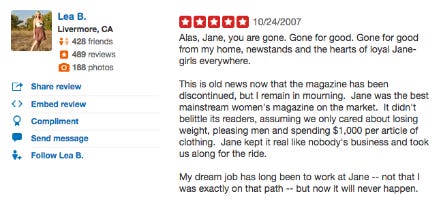
JANE would buy you Chinese takeout, join you for a smoke break and go dancing with you in a slip dress. She’d share among strangers that she’d been happily celibate because of political differences with men, or unpack at the Thanksgiving table why some popular ad campaign was despicable.
People often said JANE didn’t live up to Sassy. Regardless, JANE was part of Pratt’s lineage of giving the irreverent, unabashed female voice a platform. Before Cosmo’s Joanna Coles (now a Hearst exec) asserted that readers could care about "mascara and the Middle East," JANE lived that truth.
Sassy and JANE were some readers’ avenues into feminism — as Teen Vogue is with a next generation (in an arguably more nuanced, modern way). JANE published honest AF celebrity profiles, catnip for future feminist theory researchers and scholars. Unlike its contemporaries, the magazine also ran fiction contests and helped give female fiction writers a platform and voice.
Pratt predicted “the beginning of the Facebooking of our culture, the dawn of the age of oversharing.” How much of women’s media has gone the way of JANE with hyper-confessional “I tried this,” “It happened to me,” and other first-person essays? While the trend isn’t always good for women, JANE let women discuss the messy, unglamorous parts of their lives without judgment. The magazine met its audience AND staff on their own terms, and, true to Pratt’s word, didn’t make you feel like shit after reading it.
If today’s writers and editors are brands and personalities, JANE’s masthead piloted this whole phenomenon. “[W]hat set JANE apart and what Jane brought with her from Sassy was a cast of characters that you learned to love and identify with,” a former JANE editor told us. If editor Gigi Guerra said, “try these new Instead cups to collect your menstrual blood and then dump the blood in your plants because it's good for them.... you did it.”
With the right editor and a little more self-scrunity, JANE probably could hold its own in today’s media landscape. On that note, Pratt has hinted both on Twitter and in a Reddit AMA that she’s interested in producing a JANE-esque magazine catering to older women. Sans cookie recipes.
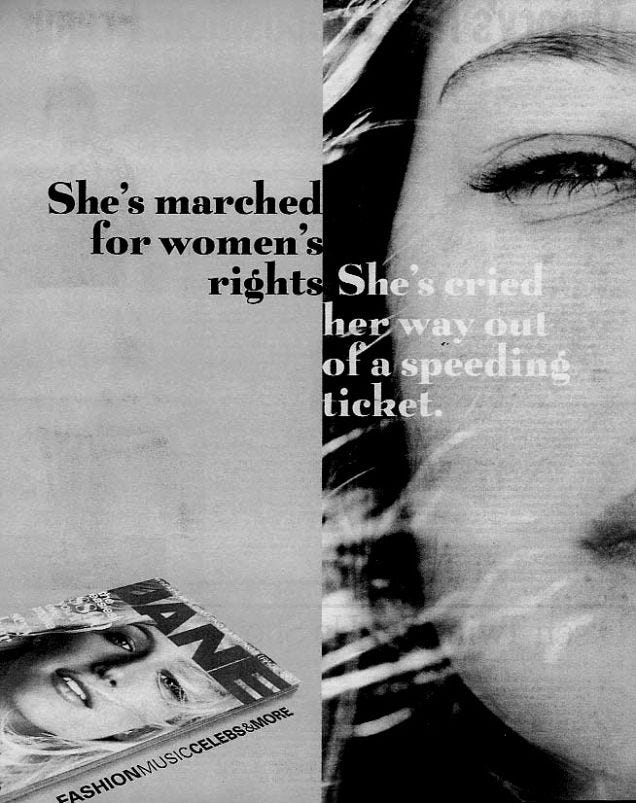
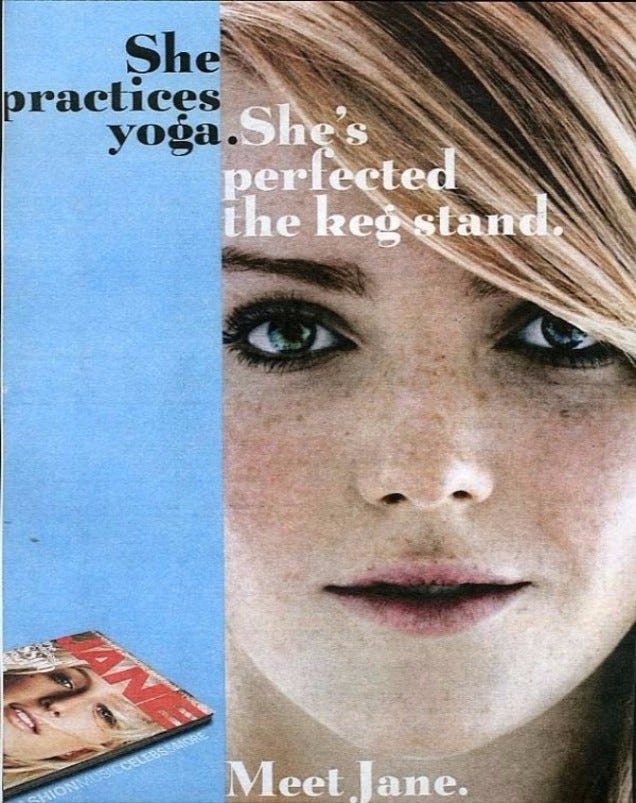
slight burn
“Some thought it was too consumerist, that it celebrated a cloying brand of quirkiness for its own sake, that it spoke in some sort of inane urban girl patois and that it eschewed real feminism for you-go platitudes about drinking and sex.” - NYT
high praise
“What will be remembered will be the good stuff — the bold journalists who weren’t afraid to get down and dirty in their reporting, the decision to give prime real estate to great bands rather than Cosmo-style sex tips, the ideal of giving women an oasis from nitpicking their every ‘flaw.’ Who knows, maybe in ten years, JANE will be canonized like Sassy is now.” - Huffington Post
related reads
Does Jane Need a Makeover? (Wall Street Journal, 2005)
I Found a Jane Magazine from 2001 (GroupThink, 2014)
Teen magazines have always covered more than fashion. You just didn’t notice. (Washington Post, 2017)
The Personal Essay Boom is Over (New Yorker, 2017)
“Rise of Citizen Jane” (New York Post, 2005)
The Last Ditch Effort To Save JANE was Very Manic Pixie Dream Girl (Jezebel, 2013)
Thanks for reading, and hit us up! We want to know your memories with JANE and other magazines, including what you loved and hated. And if you’ve never read a women’s mag, welcome. Send notes and scans: clippedmagazines@gmail.com.

